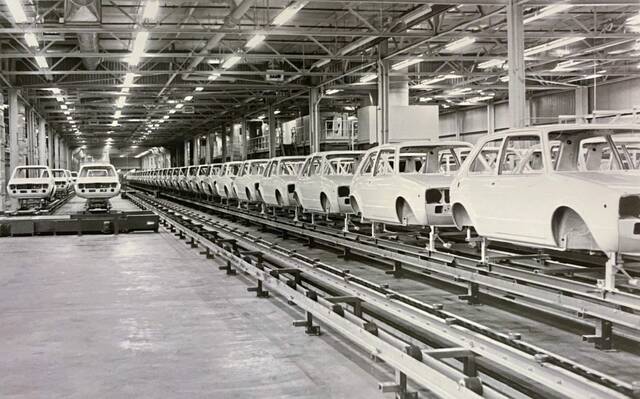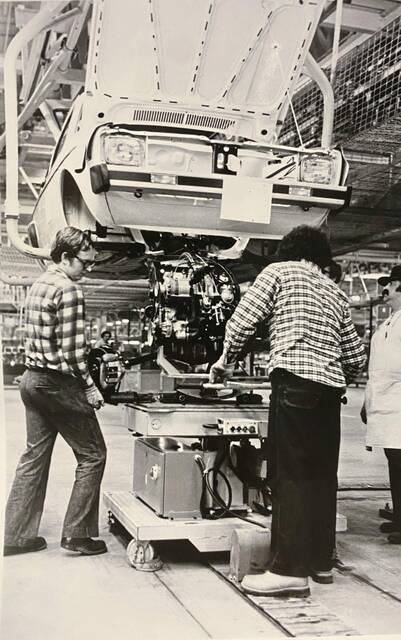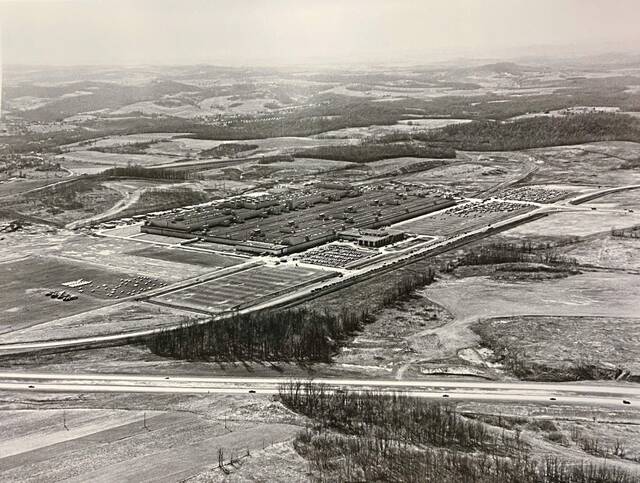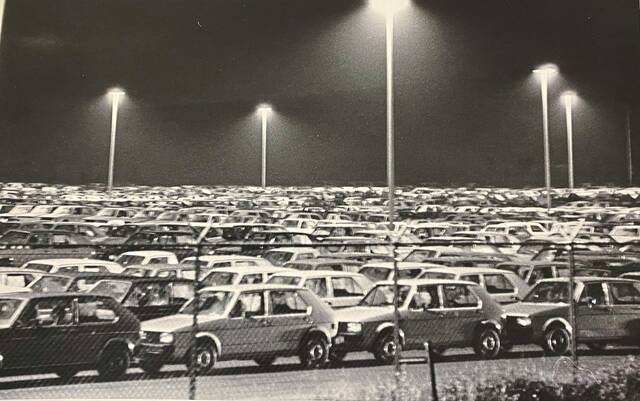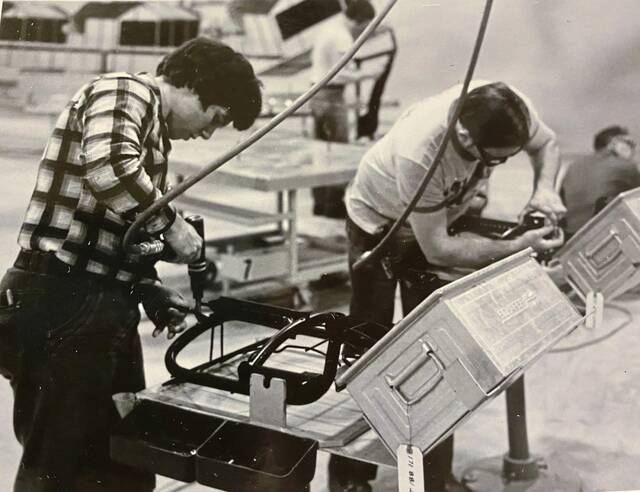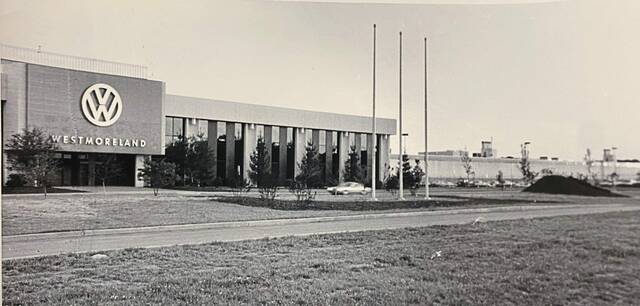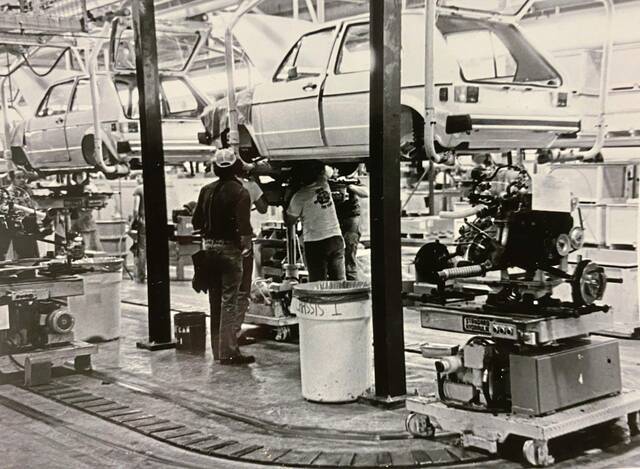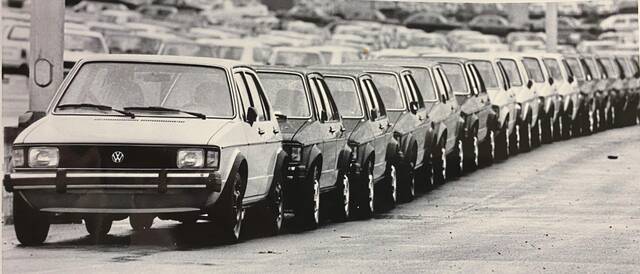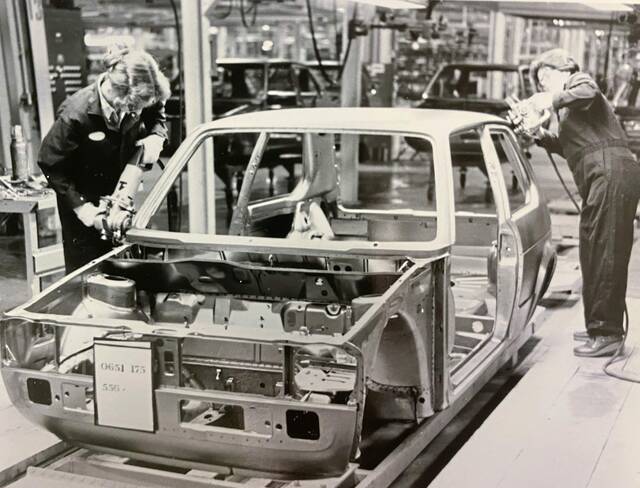From the Archive: When Rabbits rolled off the assembly line near New Stanton
Editor’s note: “From the Archive” is a recurring series highlighting vintage photos submitted by community members or gathered from the Tribune-Review’s files. If you have a photo you would like to see featured here, please contact gtrcity@triblive.com.
For about 10 years, hundreds of thousands of Volkswagen Rabbits rolled off the assembly line in Westmoreland County.
The German auto manufacturer invested $250 million into a never-completed Chrysler plant in East Huntingdon off Route 119. State and local officials crafted an incentive package worth nearly $100 million, along with a property tax exemption, to draw Volkswagen here, according to Trib archives.
The company brought about 5,700 jobs to the sprawling complex on 1,200 acres not far from Interstate 70. The 2.7 million-square-foot assembly plant took up about 40 acres, according to information provided by the company.
Production started April 10, 1978, and by 1981, the 500,000th Rabbit rolled off the assembly line, according to Trib archives. Workers had their hands in all facets of the assembly, from putting together bucket seats to sliding engines and transmissions into place with the help of synchronized conveyors.
Ron Dinsmore, 82, of Hempfield, worked there the entire time it was open and said he was proud of what he and his co-workers did. He was a repairman and chairman of the bargaining committee.
“It was a nice place to work, everything was good there, the atmosphere was great,” he said.
But there were several strikes during the plant’s time in operation. Production was idled at times as workers protested policies related to shift lengths and breaks and fought for higher wages.
In 1981, sales started to slip and some workers were furloughed as production was cut, according to Trib archives.
By 1987, sales plummeted 40%. In November 1987, tearful workers were informed the plant would be shutting down. It closed the following year, leaving 2,500 workers jobless.
“I’m sorry it happened, there was a lot of good people that lost their jobs then,” Dinsmore said. “They made a good car, they were proud of it, then they were left go.”
It was a blow of $100 million a year to the local economy and slashed revenue in Southmoreland School District and other municipalities, according to articles published in the Nov. 21, 1987, edition of the Tribune-Review.
Officials then hoped the plant would be sold to another automaker, but those plans never came to fruition. In 1991, Sony Corp. opened a TV production plant there, employing hundreds of workers. It closed in 2010 and the site has had several other uses since.
Renatta Signorini is a TribLive reporter covering breaking news, crime, courts and Jeannette. She has been working at the Trib since 2005. She can be reached at rsignorini@triblive.com.
Remove the ads from your TribLIVE reading experience but still support the journalists who create the content with TribLIVE Ad-Free.

